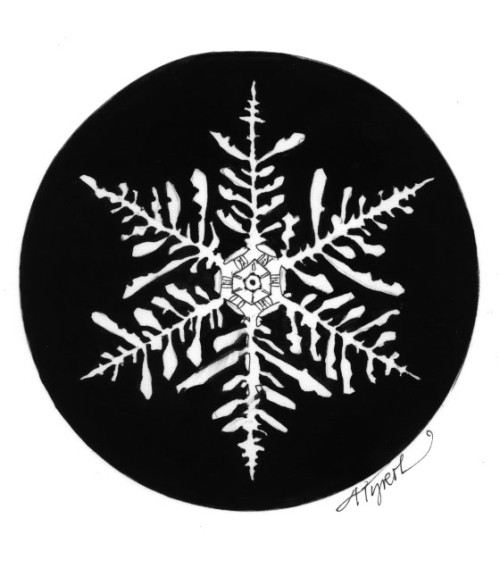
Could it really be true that no two snowflakes are alike?
Most New England school children are raised with the story of Warren “Snowflake” Bentley of Jericho, Vermont, an introverted sometime-farmer who figured out a method for magnifying and photographing snowflakes behind his farmhouse in the late 1800s. As the years went by and his photograph collection grew to more than 5,000 images, Bentley noticed that the crystalline pattern of snowflakes was so intricate that no two were ever alike. From there he postulated the general rule that every snowflake was unique.
Even as a grade-schooler, I had trouble swallowing that tale. Sure, no two flakes were alike in Bentley’s backyard, but think of all the snowstorms in all the backyards in all the history of the world. Surely a couple of those flakes must have been the same.
So, which is it? Are all snowflakes unique? Was Bentley right?
The answer is no.
And yes.
First, the yes. The reason this discussion can happen at all is that a snowflake’s arms grow in a geometric shape called a fractal, the definition of which is that every piece of the whole has the same pattern as the whole itself. In the case of a snowflake, each arm of the flake has little arms growing off of it. Look more closely, and each of the little arms has even littler arms growing off them, and these littler arms are exactly the same shape as the larger arms they’re growing on. And so on. You can follow this down as far as your eye (or your camera or your microscope) can take you, right down until you get to the individual water molecules themselves. There are roughly 1018 water molecules in a fully formed snowflake – that’s a billion billion – so you could keep yourself busy for quite awhile doing this.
Despite having so many molecules, if snowflakes were all grown in a laboratory under identical conditions, they, too, would all turn out the same. In real life, however, snowflakes form in the earth’s atmosphere, where the slightest variations in temperature, pressure, and velocity end up disrupting, distorting, or redirecting a snowflake’s growth. Because of this element of chance, the odds of the billion billion water molecules all aligning themselves exactly the same way twice are not very large.
You sticklers out there will note that not even all water molecules are alike. Good old H2O comes in several flavors: about one in 500 molecules is made with a heavier version of hydrogen called deuterium, and one in 5,000 molecules features a heavier version of oxygen. Spread this molecular variability across the billion billion elements of the fractal pattern, and tumble that growing snowflake through a real live atmosphere, thereby introducing randomness into its growth, and the number of possible snowflake patterns out there is, essentially, too large to put a number on. It exists somewhere in the gray area between infinity and “too large to count.”
In contrast, only about 1024 snowflakes fall on the earth per year – about a million billion billion. The earth has only been cold enough for snow formation for the last half a billion years or so, meaning that the number of snowflakes that have fallen in the history of the world isn’t all that many: a shade over 1031, or well short of a trillion trillion trillion.
Ultimately, therefore, Snowflake Bentley had it right: no two snowflakes are alike.
But he had it wrong, too. If Bentley had lived long enough to keep photographing snowflakes, he most certainly would have found two that were identical: identical, that is, as far as his camera and eye could discern. His photographs from 100 years ago, as vivid and detailed and beautiful as they are, only reveal the first few levels of a snowflake’s fractal geometry – nowhere near enough to distinguish a snowflake’s true individuality.
Ironically, then, if Bentley had kept doing what he was doing, photographing snowflakes in his backyard, and could have done so for all the snowstorms in the history of the world, he would have proved himself wrong. He would have found trillions of snowflakes that looked exactly alike. But he didn’t. He was mortal, he grew old, he could only take so many photographs, his camera was simple, his backyard was small, and at one point, perhaps tiring of the whole affair, he stepped back from his camera with the simple realization that no two snowflakes were alike. And he was right.

